Client: People often get sick and go to the doctor. Then they either get better or they don’t. This happens and nothing can be done about it. But what if something could have been done, but the doctor did not have the necessary qualification? This often happens, and not just in Russia.
Now about where we come in in all of this. We are a small project that will become huge. We’re not exactly a startup since we are starting as a non-profit project. We are creating an educational platform for doctors that would allow them to gain modern medical knowledge, listen to lectures and solve clinical problems in areas that are not covered in universities and that are difficult to master during their routine practice within the Russian healthcare system. We collect the best lectures and practical courses for oncologists, medical geneticists and other professionals in the fields of genomic data analysis and teach basics of the molecular nature of diseases. We take these courses from places that teach them well: Russia, Harvard, the Curie Institute in Paris, Israel, Shanghai. And as it turns out, doctors are very curious people. Perhaps, this will allow them to better treat us all. Overall, the project is useful and is, unfortunately, the only of it’s kind. Both the logo and the identity should reflect that.
Our primary product is an educational platform for doctors, which is why three concepts are important to us: medicine (healthcare), education (remote) and the molecular-genetic level (big biological data, data intensive biology). Our lectures won’t touch all areas of healthcare but only those which involve data analysis, such as oncology, prenatal diagnostics and hereditary (genetic) diseases.
We’d like to briefly explain that today doctors prescribe treatment based on symptoms they observe in patients. Neither in the university, nor in their practice they learn to plan their treatment based on understanding the molecular-genetic nature of the disease. For example, an oncological disease is caused by a fairly complex process of mutations in the DNA molecule which makes it issue incorrect instructions to processes in the human body. It can happen that two patients exhibit similar symptoms with completely different causes for the disease and the doctor will prescribe them both the same treatment. With respect to hereditary diseases, mutation in one gene can lead to various hereditary (genetic) diseases. Today, doctors need to understand the disease on the molecular-genetic level. All modern medical technologies (foreign ones) look at diseases this way.
Why are we doing this project? Imagine if someone you know falls ill. They try one drug, then the next: the drug helped many people but fails to treat your friend. With this comes the feeling of weakness, inability to understand what to do next and how to keep fighting. But biology and medicine have already become (or are becoming) exact sciences, understanding of which allows to prescribe specific treatment to each patient.
Unfortunately, Russian doctors are not taught any of this. They do not attend international conferences on genomic analysis, they don’t speak English well, they read few good Western articles, publish their own research in Russian journals only and cover the entire molecular biology in a one semester course in their second year at the university. Physicians don’t know the basic concepts of molecular genetics. This was about the importance of what we do. Now on to your task.
What we would and would not like to see in the logo: we prefer not to see the red cross (it’s a symbol of first aid, not modern data-based medicine), the snake emblem or the Star of Life. We would like to see unconventional images of the DNA’s double helix or letters/texts with letters A, G, C, T symbolizing the nucleic acids. As an example, we like the style Art. Lebedev Studio developed for Genotek. Maybe, the concept of the Central Dogma of Molecular Biology would be helpful (information from the double-stranded DNA helix passes on to RNA which in turns works as an instruction for creating proteins). This can be elegant. There are videos about this (in English) on YouTube. It would be great to somehow connect all of the above to healthcare, to make it clear that we’re not about laboratory analysis.
We would like to see a memorable logo and an elegant laconic background that would support strict and formally filmed lecture videos (with the lecturer against a white background), lists of test questions, etc.
The first sketches.
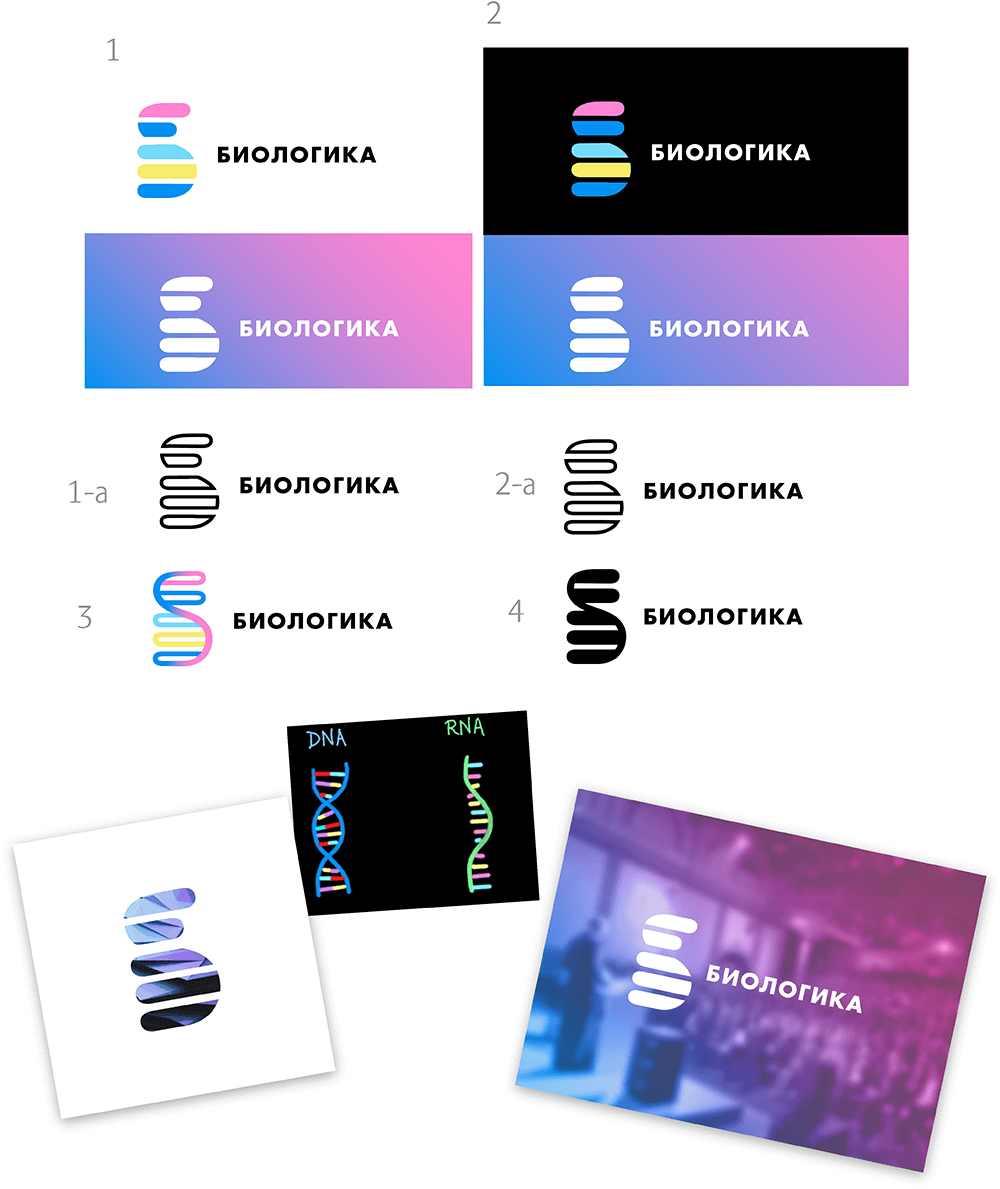
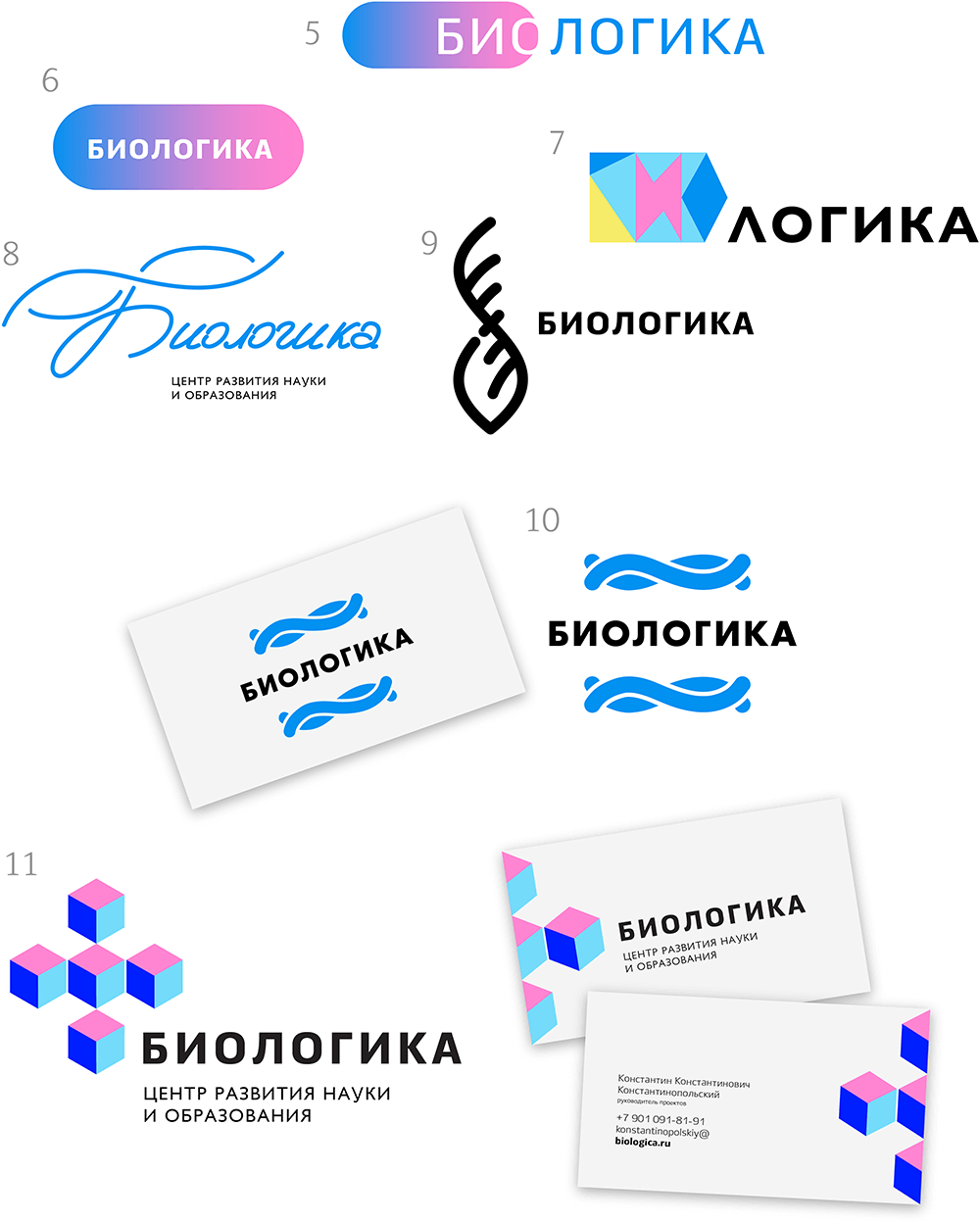
Art director: 33, 4 and 9.
Designer: I’ve drawn the sketches. Numbers 1 and 2 can be used as a black and white alternative to 3 or as separate designs.
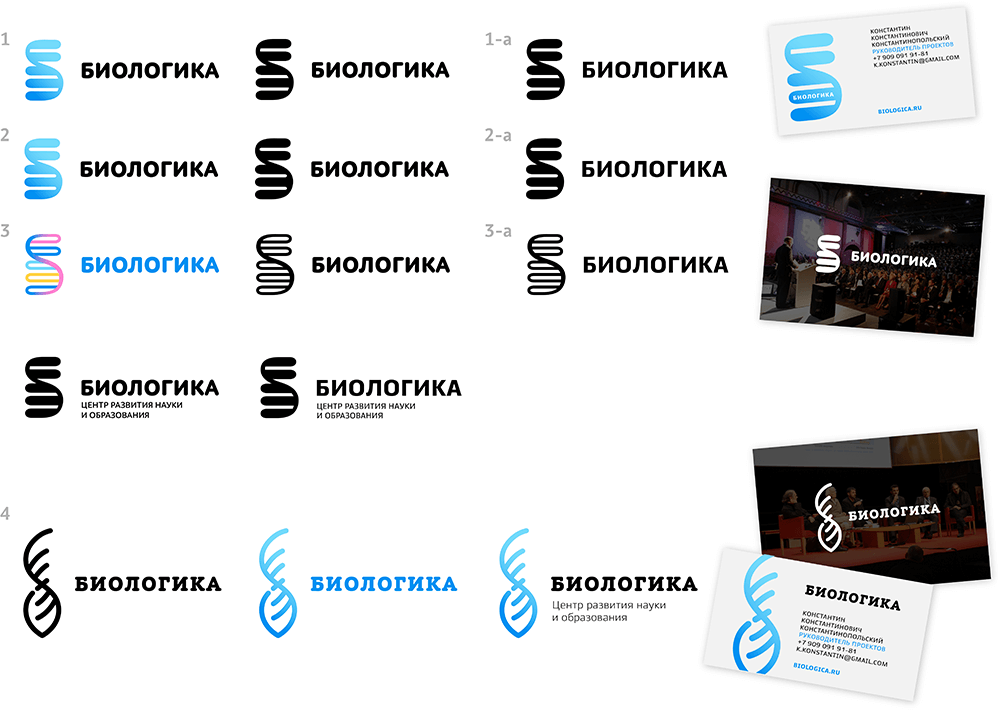
Art director: What if we add colors from 4 to 3?
Designer: Here.
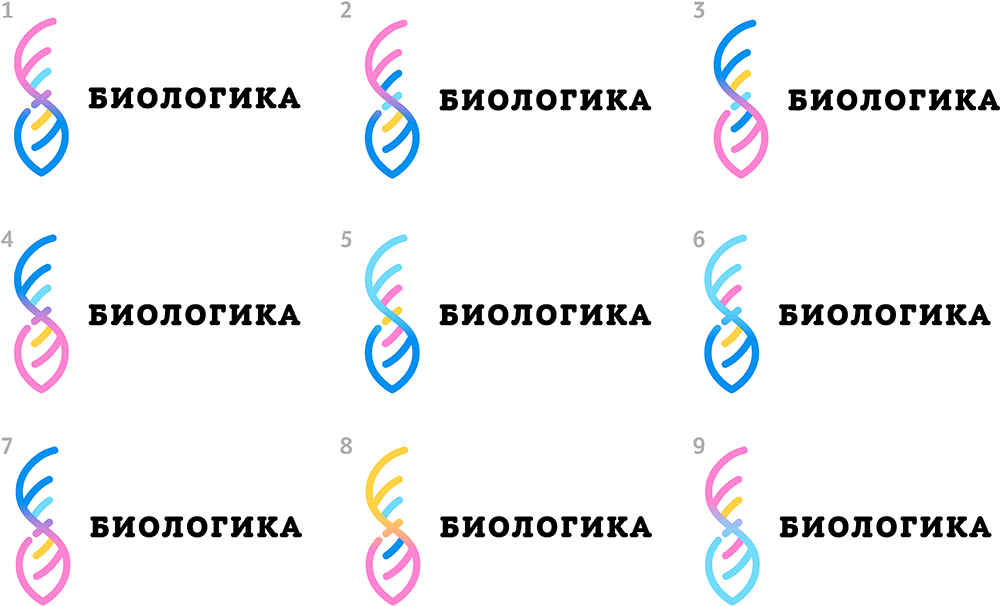
Art director: Everything looks good, but the colors need to be completely different. Right now it’s either completely feminine or about boys and girls. It has to be about science.
Designer: Here’s another attempt at colors.
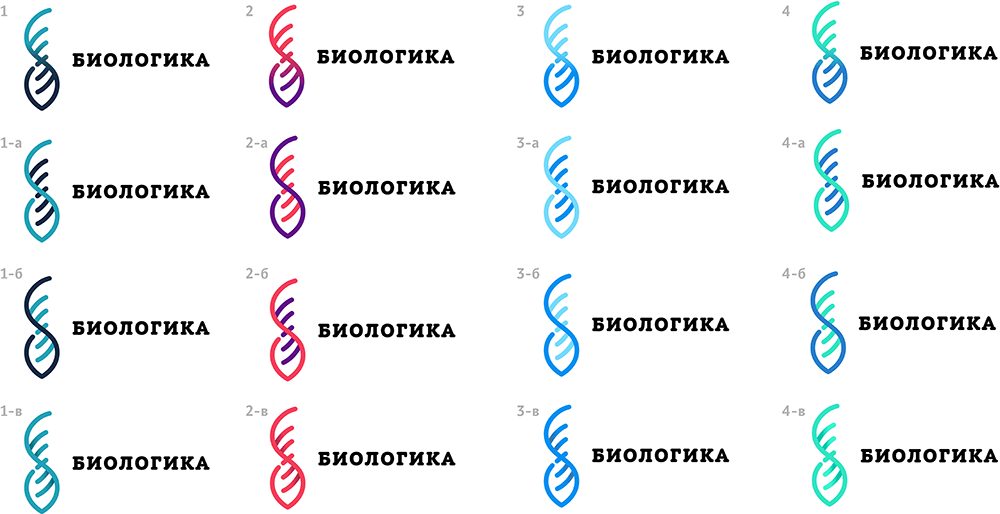
Art director: 2a looks OK. Just add different colors in the middle, the way you had it before.
Designer: Here are my efforts.
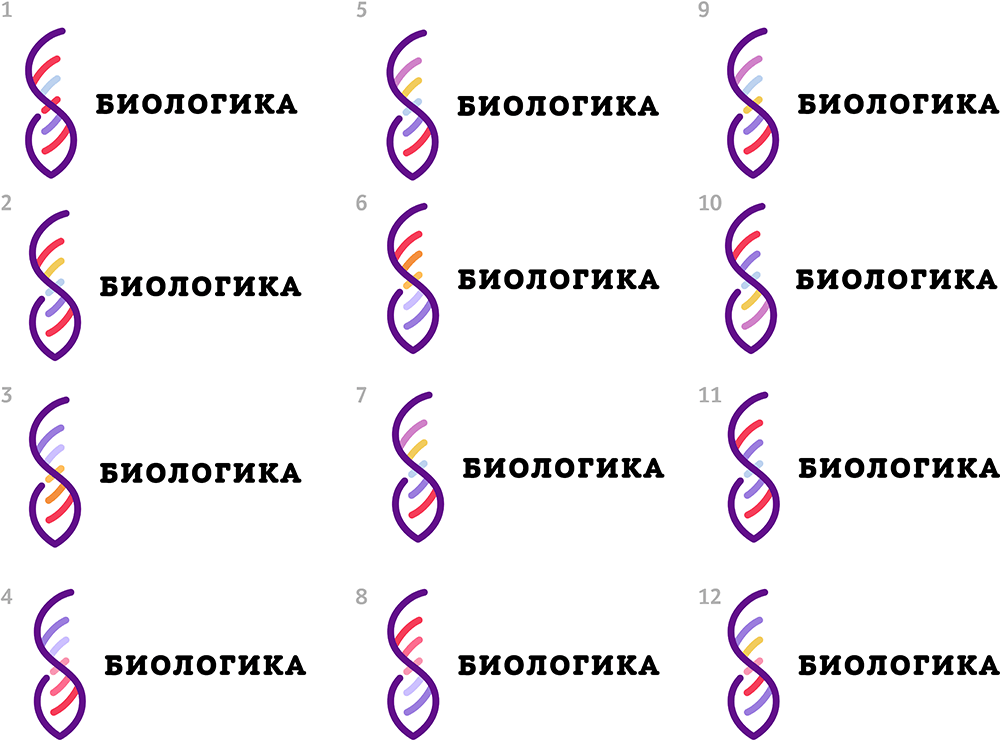
Art director: 3 is OK.
Fixing the graphics once again and sending files to the client.